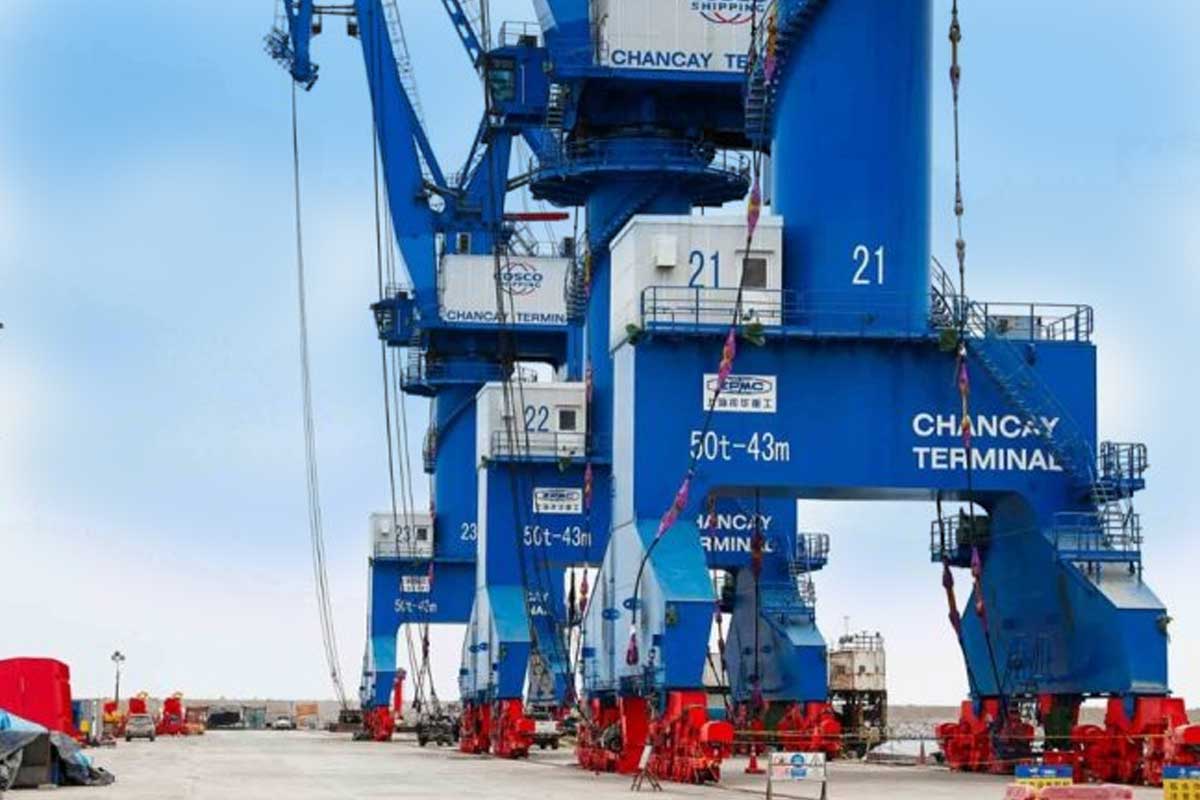The Port of Chancay in Peru: Economic boost and challenges in industrial property rights management
Guillermo Melgarejo Zorrilla, of Estudio Colmenares & Asociados SAC, analyzes the economic and regulatory implications of the potential transformation of Peru into the main port hub in Latin America and how this constitutes a challenge in industrial property rights management.
On September 4, 2023, media attention in Peru focused on the arrival of the largest vessel ever recorded on its coasts, we are talking about the CMA-CGM Alexander Von Humboldt, with a length of 400 meters and a cargo capacity of 186 thousand tons, equivalent to 16,000 TEUs (20-foot containers). This event marked a transcendental milestone in the country’s port history.
Since then, news about port infrastructure projects has continued to emerge, attracting the attention of not only countries in the region, but also the international community. The current construction of the Chancay Multipurpose Port Terminal, located 75 km north of Lima, aims to position Peru as the main port and logistics hub in Latin America. This terminal, still under development, will have the capacity to facilitate the distribution of cargo from Asia to various countries such as Chile, Ecuador and Colombia, thus boosting the dynamics of foreign trade.
According to statistics provided by the Ministry of Transportation and Communications (MTC) of Peru, the projected investment to make the Chancay Port Terminal operational is estimated at US$3.6 billion. Its inauguration is scheduled for November 2024 and the presence of Chinese President Xi Jinping has been confirmed, who will also attend the Asia-Pacific Economic Cooperation (APEC) Summit to be held in Peru.
Although positive growth is forecast in the commercial and port sector in Peru, it is necessary to recognize that simultaneously with the increase in the trade-driven economic activity and the potential increase in imports and exports, phenomena that could have negative repercussions for the collective interest, consumers and rights holders will also intensify. Specifically, the infringement of industrial property rights emerges as a concern that could worsen if it is not addressed through adequate state policies and laws that are coherent, practical and efficient in their application.
Various regulations govern in Peru whose objective is to protect industrial property rights. In relation to customs clearance operational processes, there is Legislative Decree No. 1092, Border Measures Law, and its respective Regulations, whose purpose is the protection of copyright, related rights and trademark rights. The aforementioned regulation makes it possible to suspend the clearance of goods destined for import, export or customs transit regimes when their pirated or counterfeit origin is presumed. The Customs Authority will be effective in the application of its control power, based on the information that the owner of a right must previously register in the voluntary registry that is a data platform from which the existence of the infringed right can be identified and timely issue alerts so that the owners or their representatives can take the respective legal actions.
In turn, Legislative Decree No. 1607, published in December 2023, brought important modifications to Law No. 30077, Law against Organized Crime. This change expanded the scope of action of the legislation to include customs crimes and crimes against intellectual rights. Now, criminal organizations dedicated to smuggling, undervaluation of merchandise and intellectual property crimes may be investigated and prosecuted under these regulations. This modification does not diminish the powers of the Specialized Prosecutor’s Office for Customs Crimes and against Intellectual Property, the institution traditionally in charge of these cases, but now also empowers the intervention of the Specialized Prosecutor’s Office against Organized Crime. This last entity currently has greater economic resources and specialized professionals, thus strengthening the State’s capacity to pursue and process complex crimes in the customs and intellectual property fields. This change reflects a more comprehensive and efficient approach in the fight against highly complex criminal activities.
Likewise, since July 5, 2023, Peru has had an Artificial Intelligence (AI) Law, Law No. 31814, marking a significant milestone in its efforts to promote economic and social development through the improvement of procedures in public services. This legislation seeks to take advantage of the capabilities of AI to optimize the efficiency and effectiveness of various areas, being a clear example of the public customs administration. It should be noted that the push towards technological approaches in customs management is not a recent phenomenon, since, in 2021, Customs had begun the implementation of the Smart Borders program, which incorporates the use of emerging technologies to improve customs control operations. Therefore, the Artificial Intelligence legislation adds to and reinforces pre-existing initiatives, consolidating the country’s commitment to modernizing its processes to strengthen the customs sector.
It could be considered then that the existing legislative structure in Peru would be in a position to guarantee respect for industrial property rights in the face of the potential growth of the port sector and the substantial increase in foreign trade, however, in parallel to the efforts of authorities, economic actors also emerge who, with a high degree of sophistication, infringe industrial property rights by deploying increasingly elaborate strategies, managing to evade customs control. Given this scenario, a constant evaluation of the legislation and the implementation of proactive measures are required. Likewise, it is imperative to strengthen customs control and surveillance mechanisms, taking advantage of the technological tools available to effectively counteract infringements of industrial property rights.
In conclusion, the continuous improvement of the legislative structure and the application of innovative measures are essential to address constantly evolving challenges in the customs process environment. The notable growth of foreign trade activities requires the urgent need to adapt and strengthen legislation, thus guaranteeing a legal framework that promotes the adequate protection of industrial property rights in a dynamic and changing context.



